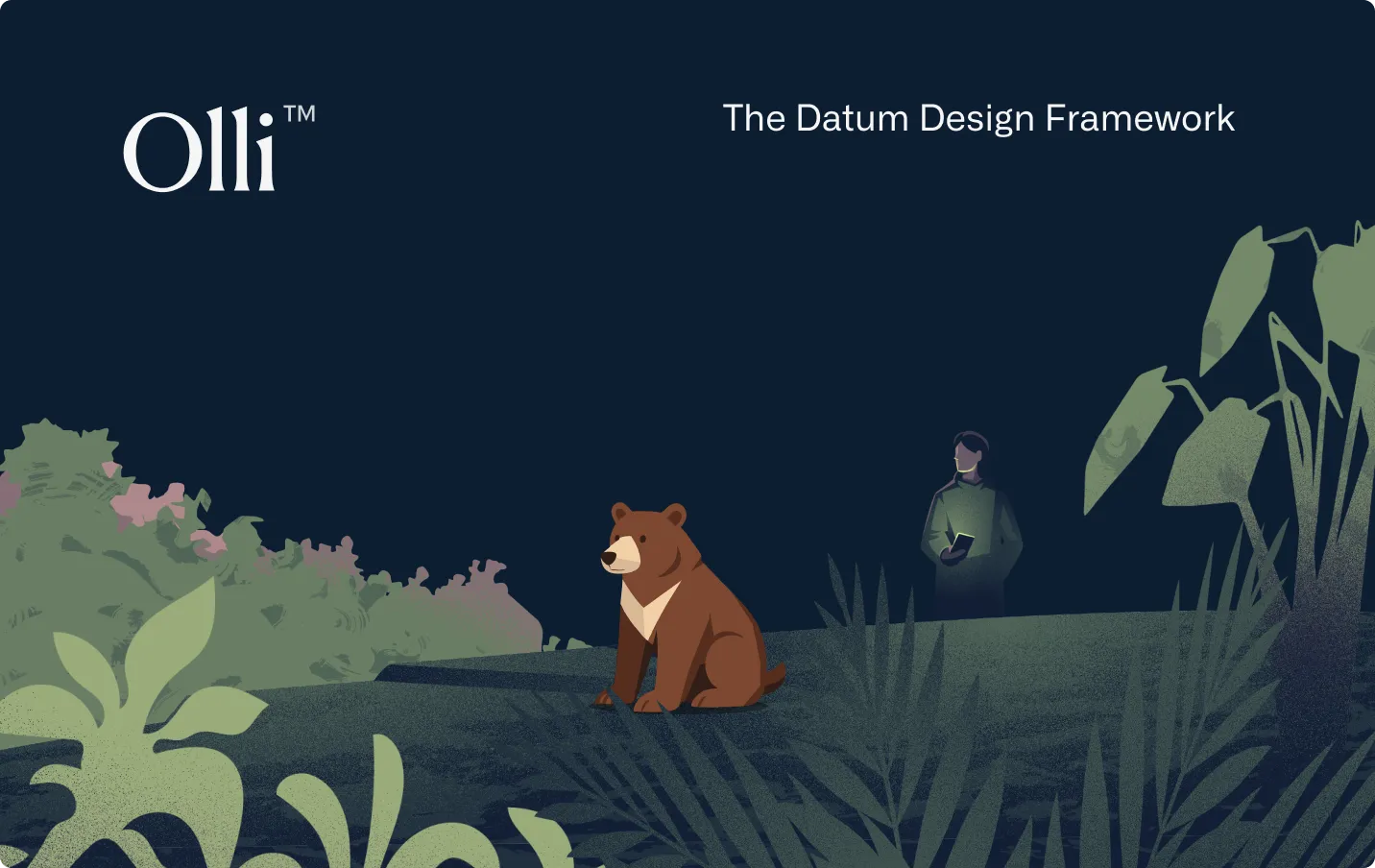At some point in building a product, speed alone stops being the advantage. You can move fast, but without shared structure, you don’t move together. And if you don’t move together, the experience shows it - small inconsistencies, tiny misalignments, micro-decisions that add up to friction for users and slowdowns for the team.
Olli is how we solved that.
It’s a custom design system built inside Figma, but more importantly, it’s a philosophy: that the best user experiences, the ones that feel coherent, thoughtful, and effortless, come from a foundation that supports creativity without constraining it. A foundation that makes it easier to build, explore, and iterate at high speed without sacrificing quality.
Olli sits quietly underneath everything we design. Our users won’t see it, but they’ll feel its effects in every interaction. And our team feels it too - in the clarity it brings, the time it saves, and the freedom it gives us to focus on solving the right problems, not wrestling with the basics.

Why Olli exists
1. To raise the quality of the user experience
Sustained design quality requires more than good intentions.
Ideally typography, spacing, scale, motion, and even interaction principles must be unified in a systemic manner - not intermittently corrected by individuals working late to align the details.
Olli gives us that. It provides structure, coherence, and guardrails that help every designer make good decisions quickly. But crucially, it doesn’t dictate the outcome.
It makes quality easier, not narrower.
2. To help us ship faster, together
Speed isn’t a product of working harder; it’s a product of removing drag.
With Olli, designers start with preset viewports, auto-scaling text, responsive type, predefined spacing values, and layout patterns that already behave intelligently.
Engineers get Tailwind-compatible variables exported directly from the system. No translation. No pixel-counting. No “why doesn’t this match the design?” threads.
When structure does the heavy lifting, teams spend less time fixing the basics and more time building things that actually matter.

3. To support creativity, not restrict it
Some design systems are loud - full of rules and rigid components that slowly reduce a team’s ability to think freely. Olli isn’t that.
Olli is intentionally quiet.
It handles the underlying logic - typography scales, spacing systems, breakpoints, modes, variables, and stays out of the way everywhere else. It accelerates creation rather than narrowing what’s possible.
You can experiment, explore, and invent with Olli. You just do so on a foundation that keeps everything coherent, consistent, and buildable.
4. To scale with us from day one
Startups often end up rewriting their design foundations once the product grows. We chose to build ours early — not because it was glamorous, but because it was necessary.
Olli lets us scale confidently. New features snap into place. New designers onboard faster. New products inherit the same principles.
It’s one system, many expressions.
How Olli works
- Tokens & Variables. Figma Variables power the entire framework — spacing, colour, responsive typography, scales, motion. They enforce consistency without limiting creativity.
- Styles & Modes Text styles dynamically adjust across breakpoints. Custom mode selectors let us shift typography systems or weights instantly. This makes multi-viewport design faster and far less error-prone.
- Tailwind Export. Our variables map directly into Tailwind-friendly output. Today it’s a quick manual process; tomorrow it will be automated. Either way, it ensures engineering and design interpret the system the same way.
What it means for Datum
- Clearer, more coherent user experiences. Users feel the harmony of a system even if they never see it.
- Faster design and engineering cycles. Less negotiation, less translation, less friction.
- Space for creativity. Structure gives us freedom - because it removes noise.
- A shared language across the company. One foundation, one vocabulary, one way of building.
A quiet framework with a loud impact
Olli won’t appear in our marketing. It won’t show up in onboarding. Users won’t ever know its name. But they’ll feel it - in the clarity of the interface, in the consistency of interactions, in the sense that everything simply fits together.
And for our team, Olli gives us the thing that’s hardest to get right: a way to move quickly without breaking coherence, and a way to maintain quality without slowing down.
It’s the quiet framework behind better user experiences and faster delivery. And it’s only the beginning.
